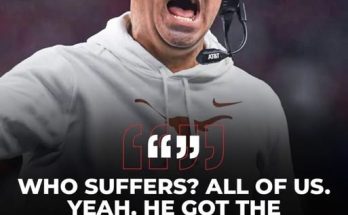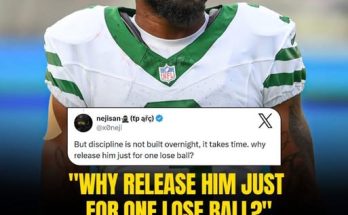Certainly! Here’s a 1,500-word feature article titled:
Before the Banners: “He Built the Brotherhood, But Was Left Behind: The Forgotten Legend Who Made Duke Great”
In the rafters of Cameron Indoor Stadium, jerseys hang like sacred relics—Christian Laettner, Grant Hill, Shane Battier, J.J. Redick. These are names that echo through generations of Duke basketball lore. They are the chosen few, the Brotherhood’s crowned kings, remembered in banners and highlight reels. Yet before the five-star recruits, the NBA pipelines, and the social media fanfare, there was another.
He never had a hashtag. No slick documentary. No jersey hanging in the sky.
His name is Johnny Dawkins.
And he made Duke what it is.
In the early 1980s, Duke University was not yet a blue-blood basketball program. It was a respectable academic institution with a modest basketball history and no national titles. The arrival of Mike Krzyzewski in 1980 brought skepticism, not celebration. The program needed belief—someone to buy into a vision before it had a track record.
That someone was Johnny Dawkins.
A wiry 6’2” guard from Washington, D.C., Dawkins committed to Duke in 1982. He was not only Krzyzewski’s first star recruit—he was the foundation of everything to come. Dawkins wasn’t joining a dynasty; he was asked to help build one. At the time, that required more than talent. It required faith.
Dawkins’ four-year career was a steady climb from irrelevance to the brink of greatness. As a freshman, he led the team in scoring. By his senior year, he was a consensus All-American, Naismith Award winner, and the face of a 37-win team that reached the NCAA title game.
That 1985-86 Duke team laid the blueprint for future success: defensive tenacity, team-first offense, high basketball IQ, and relentless grit. Dawkins was its heartbeat.
He finished his career with 2,556 points—a school record at the time—and helped redefine what Duke Basketball could be. His fearlessness on the court, his leadership, his unwavering loyalty to Coach K—they became the DNA of Duke’s future.
The 1986 NCAA Championship game was more than a loss to Louisville. It was a crucible.
Dawkins scored 24 points and did everything he could to will Duke to its first title. But in the final moments, fatigue and fate conspired. The dream ended in heartbreak. Yet, in that moment of defeat, Duke became something new: a contender.
After that year, Duke was no longer a school with potential—it was a program with expectations. And that shift, as much as any game or recruit, is part of Dawkins’ legacy.
After a solid NBA career with the Spurs and Sixers, Dawkins could have gone anywhere. Instead, in 1998, he returned to Duke—not as a star, but as an assistant coach. For over a decade, he became Coach K’s right hand, mentoring players like Chris Duhon, J.J. Redick, and Daniel Ewing.
He wasn’t chasing headlines. He was molding men.
In the locker room, he was “Coach D.” Quiet, steady, wise. He taught more than jump shots and defense—he instilled the culture that became the Brotherhood. When players like Redick speak of their time at Duke, Dawkins is often the first person they thank.
In 2008, Dawkins finally left Duke to become the head coach at Stanford. It was the right move professionally, but something felt off. Unlike other Duke legends, Dawkins never received a formal send-off. No tribute video. No farewell tour.
As he began building his own legacy out West, the spotlight at Duke moved on—to a younger generation of stars and coaches. Over time, Dawkins’ name faded from the public narrative.
Duke’s story continued: Kyrie, Zion, Tatum, and the Brotherhood. But Dawkins was rarely mentioned as one of its architects.
Perhaps the most glaring omission is this: Johnny Dawkins’ jersey does not hang in Cameron Indoor Stadium.
By Duke’s own criteria—National Player of the Year honors, All-American selections, career point totals—he qualifies easily. Yet for reasons never fully explained, the program has not retired his number.
Fans have speculated. Some say it’s a matter of timing, others say it’s a decision Coach K struggled with. But the silence is loud. And the absence is profound.
Imagine building the house, watching others move in, and never being offered a room of your own.
In 2025, Duke Basketball stands as one of the greatest dynasties in college sports. It has banners, NBA stars, and a culture that transcends wins and losses. But every story has a beginning.
To ignore Johnny Dawkins’ role is to misunderstand the very soul of the program. His sacrifice, leadership, and belief came when Duke had nothing to offer but promises. He wasn’t born into the Brotherhood—he built it.
And he did it without ever asking for recognition.
Recently, there’s been a growing movement among Duke fans and alumni to honor Dawkins properly. Some have taken to social media with hashtags like #RaiseDawkins, pushing for his jersey retirement. Former players have voiced support. Even Coach K has hinted that it’s time to revisit the conversation.
As the program transitions into a new era under Jon Scheyer, there’s an opportunity to correct the oversight. Not out of pity or nostalgia—but out of respect.
Johnny Dawkins wasn’t a chapter in the Duke story.
He was the prologue.
In sports, greatness is often measured in trophies and titles. But legacy? That’s different.
Legacy is about what you build for others to inherit.
Johnny Dawkins may never have cut down the nets in April, but he built the ladder.
He may not have been carried off the court in victory, but he carried the weight of a vision before anyone believed in it.
He gave Duke its identity. And then, quietly, he gave it away—so others could shine.
That kind of greatness doesn’t always fit in a trophy case.
Sometimes, it just deserves a banner.



